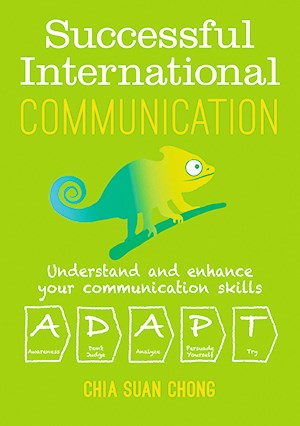Relationship building across cultures

As teachers, we invest a lot of time and effort into building and fostering good relationships with our students because we know that having a good relationship can help promote cooperation, motivate our students, cultivate loyalty, and make our lives more pleasant all around. And this is true not just for the classroom but also in any dealings we might have in the world around us.
In the recent issue of ETp (Issue 119), I argued that we ought to also be teaching our students to build good relationships when interacting in English. But is the concept of what makes a good relationship universal? Can the ways we use to build relationships in one culture translate into another?
During my early twenties in Singapore, I was building relationships with the people around me with the help of my loud and bubbly, what-you-see-is-what-you-get type personality. I enjoyed a lot of success building many meaningful relationships quickly. People I met became best friends after short but intense periods of spending time together, and trust was built through the sharing of personal stories and the opening of hearts.
When I moved to London at 24, I tried to build relationships with my new housemates in the ways I was used to but was shocked to overhear one of my housemates describe me as ‘over-enthusiastic’, ‘too smiley’, ‘insincere’, and ‘fake’. At that time, I was shocked and felt like my personality was under attack, not realising that perhaps the ways I had chosen to try and build relationships were not well-suited to the culture of the people I was dealing with.
Before continuing, I’d like to clarify the term ‘culture’ and move us away from national stereotypes and generalisations. The relationship-building culture of my ex-housemates may not only be influenced by their nationality and even the practices and beliefs of the regions they came from, but also by other cultural factors such as their age group, their gender, the industries and companies they work for, etc. Similarly, my cheerleader personality and quick-and-intense relationship building style was probably a product of not just my nationality, but my age, the schools I went to, the entertainment and media industry I used to work for and the life experiences I’d had.
In other words, my ex-housemates and I had very different cultural expectations of how relationships ought to be built not simply because we were born in two different countries, but because of an amalgamation of factors that influenced our beliefs, values and practices.
So what could I have done to prevent a misunderstanding of my intentions? Instead of assuming that everyone will take to building relationships the same way I do, it would have served me well to take a friendly but calm and level-headed approach to breaking the ice while I gradually figured out what worked best for them.

In other words, the importance of getting to know the expectations of your counterparts is key to successfully building good relationships.
For starters, here are some key issues you could pay attention to:
Relationship versus Results
How is trust built? Are they relationship-oriented or results-oriented? Do they want to hear personal stories about your children and see photos of your recent holiday, or do they prefer to focus on the business at hand and hear about your professional goals and achievements?
Quick or Deep Trust?
Is trust built quickly or do they prefer to build gradual but deeper trust in the relationship?
Professional time only or private time too?
How do they feel about going out for drinks or a meal outside the professional arena? Is it expected or seen as an intrusion on their private time? (Note that there might even be a difference between drinks and meals. In my previous workplace, it was commonplace for colleagues to build relationships in a bar over drinks, but only those who have a close relationship would go for a meal together.)
Taboo versus safe subjects
What do they normally talk about? What are the taboo subjects and what are the safe ones? Some might talk about weather to break the ice, but others might see that as superficial and irrelevant. To some, complaining about a common issue might be a good way to bond, but to others, this is an undesirable display of negativity.
The place of humour
Humour can be a great way to ease the tensions and build good feelings all around, but to some, it might be seen as flippant and disrespectful. Be aware that the place of humour in relationships can vary greatly depending on the culture, and how humour is delivered (slap-on-the-back gregariousness versus dead-pan humour) can differ widely too. See my previous post Humour Across Cultures for more on this.

Rude interruptions or active participation?
While some might consider short turns and regular interruptions a sign of active participation and emotional involvement in the conversation, others might see it as an inability to listen and consider it rude. You might think you’re simply showing an excitement for a topic but could actually be coming across as disrespectful.
To smile or not to smile?
We can smile to signal approval, to show camaraderie, and to be pleasant, but too much smiling might come across as insincere, whilst too little smiling might seem intimidating and difficult. Pay attention to how much your counterpart is smiling and use that to gauge your response.
Context Context Context
Always pay attention to context. Someone at a networking event might prefer idle chitchat about their family life but could become more goal-oriented when in a high-pressure situation with a deadline looming.
Seeing our learners will most likely be communicating across cultures when interacting in English, it is paramount that we help them make those relationships work by helping them to reflect on their relationship-building skills and adapt accordingly.
To read more about relationship building and communicating across borders, do get a copy of my new book Successful International Communication. Pre-order discounts are available to those who order now.



Comments
Write a Comment
Comment Submitted